Occupational Safety Training for Grass Cutting Machine Operation
99,000 ₫
Note: The above price is calculated for one person. Prices may vary depending on the number of trainees participating in the course and market fluctuations. For more accurate pricing information, please refer to the price list or contact our consultants directly.
Occupational safety is an important issue when operating a lawn mower and needs to be addressed promptly to ensure the health and safety of workers while also enhancing the reputation of businesses here. The Occupational Safety Training course is one of the effective solutions to raise awareness of accident prevention among workers when operating lawn mowers.
Table of Contents
Toggle1. Overview of Lawn Mowers
a. What is a lawn mower?
A lawn mower is a device used to cut grass on lawns, parks, or any area where grass grows thick and needs to be trimmed short to maintain a clean and neat surface. Lawn mowers are commonly used in landscaping and garden maintenance.
There are many types of lawn mowers, including push mowers that you must manually push, powered lawnmowers with engines to make mowing easier, and riding mowers that you can sit on and operate. Lawn mowers can run on various power sources, including gasoline, electricity, batteries, and others.
Lawn mowers save time and effort compared to manual cutting, and they are an important part of maintaining a green, clean environment.

b. Working principle of a lawn mower
A lawn mower operates based on several basic principles to cut and improve the surface of the grass. Here are the fundamental operating principles of a lawn mower:
- Blades: A lawn mower has one or more blades attached underneath. These blades are usually made of steel or steel alloys and designed with sharp edges to cut grass.
- Blade rotation: The mower generates power (via a gasoline engine, electric motor, or other sources) to rotate the blades.
- Grass cutting: As the blade spins, it creates cutting force to trim the grass. The blade, mounted on a shaft, spins quickly and cuts grass as the mower moves across the ground.
- Grass management: Lawn mowers often have a protective cover to keep the blades enclosed and collect clippings. Depending on the type of mower, grass clippings can be collected or left on the lawn.
- Cutting height control: The user can adjust the cutting height by raising or lowering the blades, allowing grass to be trimmed at the desired height.
- Movement: The user moves the lawn mower across the grass surface to cut it, either by pushing (for push mowers) or driving (for riding mowers).

c. Industries that use lawn mowers
Lawn mowers are important tools used in many industries for grass maintenance and management. Some industries that use lawn mowers include:
- Parks and gardens: Public parks, gardens, and green spaces often use lawn mowers to maintain short grass and keep the area clean and attractive.
- Golf courses: Golf courses require grass to be cut at specific heights to maintain play quality. Specialized mowers such as green mowers, fairway mowers, and rough mowers are used.
- Sports fields: Soccer fields, tennis courts, badminton courts, and other sports grounds need regular mowing to ensure safe and optimal playing conditions.
- Equestrian farms: In the horse industry, lawn mowers are used to cut grass in stables and surrounding areas to provide clean feed for horses.
- Farms and livestock: Farms and ranches use mowers to cut grass for feeding cattle and poultry.
- Gyms and hotels: Green areas around gyms, resorts, and hotels also require mowers for landscape maintenance.
- Construction and architecture: In construction, lawn mowers may be used during building projects or facility maintenance.
- Individual consumers: Homeowners also use lawn mowers to maintain grass in their yards, gardens, or private properties.
2. Overview of Lawn Mower Operation Safety Training
a. What is occupational safety training?
- Occupational safety training for lawn mower operation equips workers with awareness and prevention of workplace accidents. Employees working directly with lawn mowers fall under Group 3.
- The training helps workers identify and avoid hazards, reducing risks of accidents while working.
REGISTER FOR OCCUPATIONAL SAFETY TRAINING
b. Training duration
Initial safety training duration:
- Total training duration is at least 24 hours, including assessments.
- 8 hours of theoretical lessons on policies, laws on occupational safety and hygiene
- 8 hours of theoretical lessons on basic occupational safety and hygiene knowledge
- 4 hours of theoretical lessons on specialized training content
- 2 hours of practical lessons on specialized training content
- 2 hours of theory assessment at the end of the course
The safety training center will distribute the training schedule across several sessions depending on the workers’ availability. Typically, there are 6 sessions over 3 days, provided the employer can arrange continuous training.
Periodic safety training duration:
- Before the safety card expires, workers must attend periodic occupational safety training to renew it. The periodic training duration must be at least 50% of the initial training duration.
Explanation: The total duration of periodic occupational safety training is at least 12 hours, including assessments. After completing and passing the test, workers will be reissued or have their safety card renewed.
c. Training content
| No. | TRAINING CONTENT | TRAINING DURATION (HOURS) | |||
| Total | Including | ||||
| Theory | Practice | Test | |||
| I | Policies and laws on occupational safety and hygiene | 8 | 8 | 0 | 0 |
| 1 | Overview of legal documents on occupational safety and hygiene. | 6 | 6 | ||
| 2 | System of standards and technical regulations on occupational safety and hygiene. | 1 | 1 | ||
| 3 | Specific regulations from state authorities on safety and hygiene in new constructions, expansions, renovations, production, storage, and inspection of machinery, equipment, materials, and substances requiring strict safety and hygiene. | 1 | 1 | ||
| II | Basic knowledge of occupational safety and hygiene | 8 | 8 | 0 | 0 |
| 1 | Basic knowledge of hazardous and harmful factors in the workplace. | 4 | 4 | ||
| 2 | Methods to improve working conditions. | 1 | 1 | ||
| 3 | Safety culture in production and business. | 1 | 1 | ||
| 4 | Rights and responsibilities of employers and employees; policies on occupational safety and hygiene; functions and duties of the workplace safety network. | 1 | 1 | ||
| 5 | Safety and hygiene rules, signs, safety instructions; use of safety equipment and personal protective equipment; first aid for workplace accidents; occupational disease prevention. | 1 | 1 | ||
| III | Specialized training content | 6 | 4 | 2 | 0 |
| Comprehensive knowledge of machinery, equipment, hazardous substances; risk assessment and management; safe work procedures with equipment and substances requiring strict occupational safety and hygiene. | 6 | 4 | 2 | ||
| IV | Final test on safety training content | 2 | 2 | 0 | 0 |
| Total | 24 | 22 | 2 | ||
See more training content for 6 groups
d. Occupational safety card
After completing occupational safety training and passing the test, workers will be issued an occupational safety card (commonly referred to as a safety certificate for Group 3).
The Group 3 card shows details such as name, date of birth, job, and specific work environment. It also includes training duration, a red seal, and a signature confirming course completion.
According to Article 24, Decree 44/2016/NĐ-CP regulations on occupational safety, there are 2 cases:
- If the employer and employee have a labor contract, the employer must sign, stamp, and seal the safety card for Group 3 workers after they complete the training and pass the test.
- If the worker is a freelancer or seasonal worker without a labor contract, the training provider must sign, stamp, and seal the safety card after the worker completes training and passes the test.

3. Hazards when operating lawn mowers
Operating a lawn mower can pose several hazards, especially when safety measures are not followed. Below are some dangers when operating a lawn mower:
- Injuries from the blade: The mower blade spins very fast and can cause serious injuries if the operator is not careful. Injuries include cuts, lacerations, and even loss of fingers or toes.
- Risk of lawn mower explosion: For gasoline-powered mowers, explosions or fires can occur if fuel leaks or is improperly stored.
- Injuries from obstacles: Foreign objects such as rocks, branches, or other debris can be thrown by the blade, causing injury to people or damage to surrounding objects.
- Hot engine: The mower engine can become very hot after prolonged use, and if not handled properly, it may cause fire or explosions in flammable spaces.
- Engine overheating: Engine overheating can occur if the mower is used for too long or under tropical conditions. This can cause damage or fire.
- Instability: Riding mowers may tip over if not operated carefully, causing injuries to the operator.

4. Measures to control occupational accidents when operating lawn mowers
To control occupational accidents when operating lawn mowers, you should follow these safety measures:
- Ensure the mower is in good condition and regularly maintained: Frequently check the mower to make sure the blade, engine, control system, and brakes work properly. Maintain and repair the mower according to the manufacturer’s instructions.
- Wear protective clothing: Equip yourself with protective gear such as helmets, safety glasses, safety shoes, and jackets to protect against potential hazards.
- Operate the mower properly: Follow the manufacturer’s guidelines on how to operate the mower. Make sure you understand how to start, shut off, and safely control the machine.
- Check the work environment: Before mowing, inspect the surroundings. Ensure no people or obstacles are within the mowing area.
- Avoid mowing in hazardous weather: Do not operate the mower in storms, hail, or poor visibility. This can increase accident risks.
- Use the right mower: Choose a mower suitable for the task. Handheld mowers are suitable for small gardens, while riding mowers are better for larger areas.
- Properly check and store fuel: For gasoline-powered mowers, check fuel and oil regularly and store them in a safe, dry place. Avoid fuel and oil leaks.
- Keep children and others away from the mowing area: Do not allow children or others near the mower during operation.
- Be cautious on rough terrain: If you must operate the mower on difficult or sloped terrain, take care to avoid tipping.
- Stop and turn off the machine when needed: If you need to check the blade, refuel, or perform maintenance, turn off the machine completely first.
- Regular inspection of lawn mowers helps detect early safety issues such as wear, damage, or mechanical failure, thereby reducing the risk of accidents.
5. Benefits of occupational safety training
An Toàn Nam Việt provides your business with the following excellent benefits after completing occupational safety training courses in accordance with Decree 44/2016/NĐ – CP on occupational safety and hygiene. Companies, factories, and enterprises will benefit from:
- Workers can recognize potential risks of occupational accidents and take preventive measures to avoid them.
- Businesses establish risk prevention measures in production, operation, and maintenance processes.
- Minimization of costs caused by occupational safety risks.
- Uninterrupted production helps increase labor productivity and product quality.
- Compliance with occupational safety laws, avoiding legal risks.
- Building credibility and professionalism, thereby elevating your brand.
Nam Việt’s training courses are the solution to help individuals protect themselves from external risks that could lead to injuries or, more seriously, fatalities.
REGISTER FOR OCCUPATIONAL SAFETY TRAINING SERVICES
6. Customer feedback after completing the training course
An Toàn Nam Việt has years of experience in accompanying many businesses across Vietnam, especially in the southern provinces. This responsibility is extremely valuable to us, which is why we always strive for professionalism in our occupational safety training. The motivation for Nam Việt’s growth comes from both positive feedback and constructive comments from our clients. Below are some testimonials from our partners we have served.
Bac Nam E&C Construction Investment JSC
“This is the first time using An Toàn Nam Việt’s services, and I was very impressed by the 24/7 dedicated support of the consulting team. The class was organized quickly and conveniently for our company. Thank you very much, Nam Việt!”
See more customer interviews after using our services at An Toàn Nam Việt
7. Training capacity of An Toàn Nam Việt
An Toàn Nam Việt is a reputable and high-quality occupational safety training center in Vietnam today. Our safety training sessions are regularly conducted at factories, plants, or construction sites nationwide (63 provinces in Vietnam).
REGISTER FOR OCCUPATIONAL SAFETY TRAINING SERVICES
Training license for occupational safety
- An Toàn Nam Việt has been inspected and certified by the Department of Safety of the Ministry of Labor, Invalids and Social Affairs as qualified to conduct occupational safety and hygiene training. This further strengthens our occupational safety training capacity.

Materials and lectures
- Before occupational safety training materials are used in training courses, they are reviewed and approved to ensure correctness and effectiveness when applied.
- The teaching methods of our instructors are standardized according to An Toàn Nam Việt’s system, researched and summarized by occupational safety experts to bring maximum knowledge absorption for learners.
Facilities
- Controlling classroom factors affecting training helps increase teaching efficiency and knowledge absorption.
- Training facilities are arranged with spacious classrooms that meet standards for space, lighting, and training equipment, etc.
8. Nationwide reputable occupational safety training center
At An Toàn Nam Việt, we always prioritize dedication to occupational safety training. For us, imparting self-protection knowledge to workers so they can ensure safety in their work is a way of contributing to national development.
To ensure training effectiveness, we prepare carefully and meticulously, from the smallest details. From preparing tools, equipment, teaching devices, to curricula, materials, sound, and lighting.
Our occupational safety trainers are experts with many years of experience in the field. Some even have research works on hazard identification in various industries and preventive methods.
Lectures are drawn from practical experience and delivered vividly and understandably to workers. These factors make workers comfortable while learning and enable them to absorb knowledge effectively. Naturally, the knowledge provided always complies with Decree 44/2016/NĐ-CP.
As a result, learners gain multiple preventive measures against hazards and ways to protect themselves, while also applying them appropriately in their work.
Our training center is proud to be a provider of reputable and professional occupational safety training services with the following advantages:
- Competitive training costs while maintaining quality.
- Flexible training schedules that adapt to company production timelines.
- Quick and lawful certification procedures.
- Experienced trainers with long years in the profession.
- Controlled classroom environments that improve teaching efficiency and knowledge absorption.
- Lectures designed to fit workplace safety needs of enterprises.
- An Toàn Nam Việt works diligently and professionally to support customers accurately and quickly.

9. Additional occupational safety training materials
- Occupational safety materials for operating handheld lawn mowers
- Occupational safety training materials set
- Occupational safety training test set
- Occupational safety multiple-choice test for operating lawn mowers
- Occupational safety training slides for operating lawn mowers
10. Occupational safety training activities
1 review for Occupational Safety Training for Grass Cutting Machine Operation
No comments yet

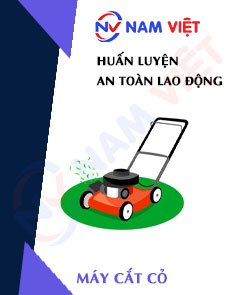
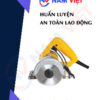
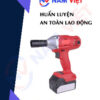



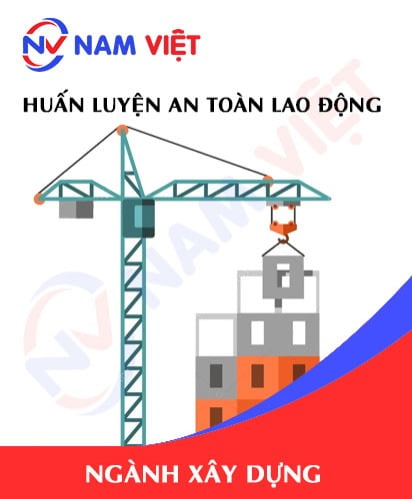
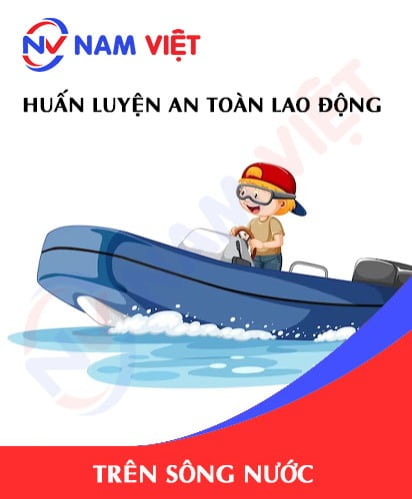
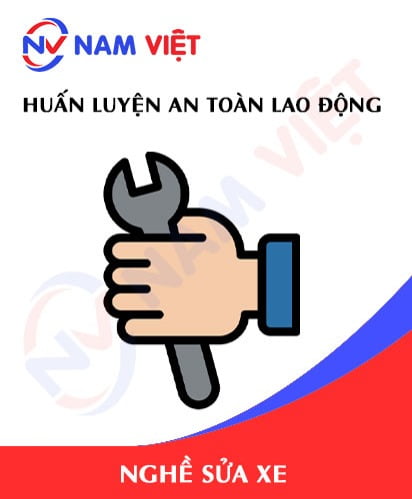




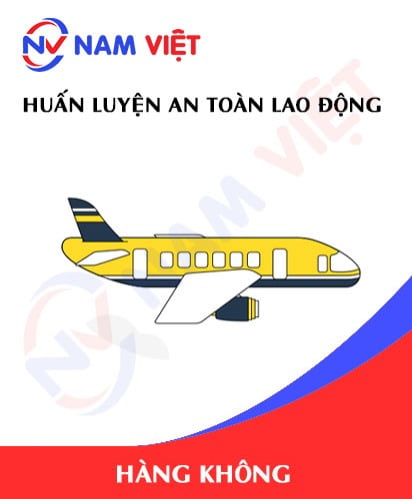
phanminhhang341
Giảng viên dạy rất sinh động dễ hiểu!